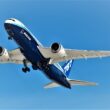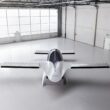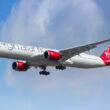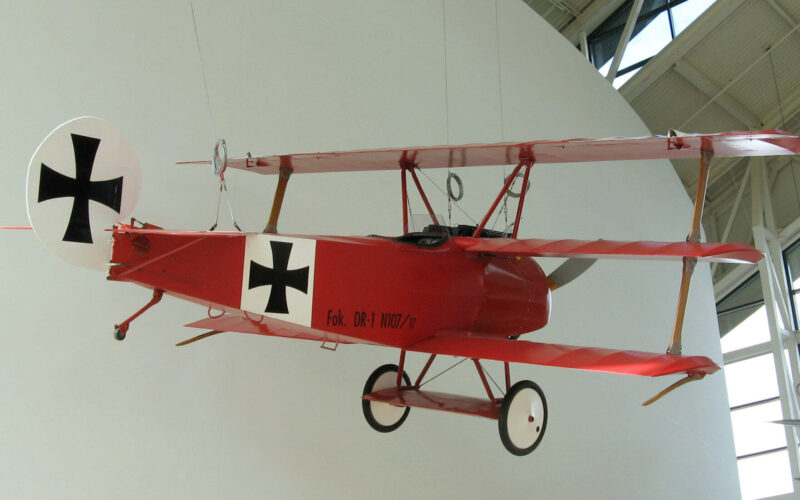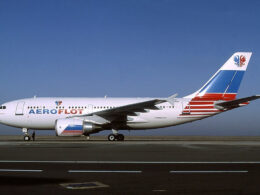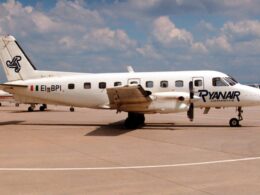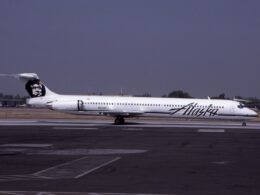The Red Baron – Manfred von Richthofen was born on May 2nd
The early 20th century was an interesting time in the world. As tensions escalated, the world erupted into war after Gavrilo Princip fired a shot that would start a chain of events, first of them being The Great War, as it was called at the time.
But in the aviation industry, the conflict sparked rapid development of the aircraft. Before the war, flying was still in its early stages. The first aircraft were fairly primitive and had limited capabilities. Piloting pioneers, such as Raymonde de Laroche would count their flying distances in meters. In contrast, the current longest flight is a Singapore Airlines (SIA1) (SINGY) flight SQ 21 and SQ 22 between Singapore Changi Airport and Newark Liberty International. The two airports are separated by 15,344 kilometers.
Anyhow, The Great War also saw the first widespread conflict in the air. The term “dogfight” was born, as both sides of the conflict started to discuss their differences in the sky. With bullets.
And the discussions ended up with only one winner, with the losing side falling out of the sky. Comparing the statistics of the Triple Alliance’s and the Entente’s flying aces, one pilot is credited with the most kills – Manfred von Richthofen or “The Red Baron”.
While historians debate the exact amount of aircraft The Red Baron has shot down, most people know the number to be 80 confirmed kills. If you were to add the unconfirmed kills, it is said that there are more than 100 of them.
But who was Manfred Von Richthofen? As we commemorate the birthday of, arguably, the most famous flying ace in history, we look back at his early life, flying career, death and the legacy of the Red Baron.
An actual baron
While some might think that the Red Baron is just a nickname, Manfred von Richthofen was actually a baron.
Manfred came to life on the 2nd of May, 1892 in Breslau (Wroclaw, Poland today) into a family of Prussian aristocrats. The boy had an older sister and two brothers, who were born later.
He started going to a military school at the age of 11 and when he finished it he became a lieutenant of the 1st Uhlan cavalry regiment.
As the war broke out, firstly he served in Russia. Later on, as 1914 continued, the German army transferred him to the Western Front. As the “freshness” of the war faded away and trench warfare became a trend, Manfred von Richthofen was sent to the back, in order to help with the supplies to the front lines.
Essentially, he became bored with his current role and wanted to make a name for himself somehow. Manfred requested a transfer to the German Air Force with the request letter saying “I have not gone to war in order to collect cheese and eggs, but for another purpose”.
The German military command granted his request and subsequently, he joined the Imperial Air Service in 1915.

Red Baron’s Early Struggles
At first, Manfred von Richthofen served in Russia as an aerial observer, capturing the images of enemy positions and trenches, in order to provide intel to the German land forces.
Later on, in 1915, Manfred moved fronts yet again – this time he settled in the Western Front. There, he met Oswald Boelcke, another famous German fighter pilot at the time. Oswald, one of the early air tacticians in history, inspired Manfred to become a fighter pilot. As he concluded his training, he joined a bomber squadron – Kampfgeschwader 2 and began flying above the trenches of the Western Front.
However, at first, Manfred von Richthofen struggled. He even managed to crash on his first flight.
But as time went on, the first signs of the legend of the Red Baron became apparent. He shot down his first enemy – although nobody could confirm the kill, as the French aircraft landed in its own territory.
The Imperial Air Service transferred him to the Eastern Front in the summer of 1916. In Russia, Manfred von Richthofen yet again met Oswald Boelcke, who was on the lookout for pilots to join his newest fighter pilot unit, the Jasta 2.
Not much time has passed and The Red Baron struck his first confirmed enemy. The date was September 17th, 1916. The first kill was the start of many dogfights and downed enemy aircraft.
 Manfred von Richthofen’s Silver Cups to celebrate his downed enemies
Manfred von Richthofen’s Silver Cups to celebrate his downed enemies
Leading his own unit
As Manfred‘s downed aircraft kept piling up, not even half a year later from his first kill, in January of 1917 the Red Baron started to lead his own squadron officially named Jasta 11.
At the time Manfred von Richthofen flew an Albatros D.III. As he assumed the command of Jasta 11, we can only assume flamboyance took over, because he decided to paint his Albatros bright red. As the allied forces started seeing a bright red aircraft in the sky and realized that it was indeed Manfred, subsequently he was nicknamed The Red Baron.
Bloody April was also the reason behind the sudden stardom of Manfred amongst the allies. That April, Manfred together with his fellow fighter pilots from Jasta 11 and other units, shot down a third of the RAF’s fighters. The Red Baron alone claimed 22 confirmed kills.

Red Baron’s military career moved further. In the summer of 1917, he started to command his own fighter wing, dubbed the Jagdgeschwader 1. A fighter wing consisted of 4 fighter squadrons.
His fighter wing also became famous in the trench lines of the Allies. The enemy of Red Baron nicknamed the wing “The Flying Circus” because, well, of two reasons:
As mentioned above, the Red Baron painted his aircraft, shockingly, red. His fellow pilots also painted their aircraft in various colors.
The Imperial Air Service constantly deployed the fighter wing to different parts of the Western Front.
So, because of the wild colors and the constant location changes, the Jagdgeschwader 1 certainly reminded of a circus.
Final flight of Manfred von Richthofen
As his Flying Circus was entertaining crowds around the Western Front, on April 21nd, 1918, the unit started a mission near Vaux-sur-Somme in France.
As they encountered the enemy, The Red Baron started to chase an enemy aircraft, piloted by a Canadian pilot, Wilfrid May.
This is where the cause of death becomes uncertain. There are some theories that argue that another Canadian pilot, Arthur Brown, shot down Richthofen. Arthur was assisting Wilfrid to combat Manfred.
But many sources also claim that various gunners on the ground shot the lethal shot towards Manfred.
Various historians and medical professionals published articles over the years trying to deconstruct the real reason behind the Red Baron‘s death. The most likely conclusion is that an Australian anti-aircraft machinegunner, Cedric Popkin, downed Manfred‘s aircraft.
Nevertheless the wounds, The Red Baron managed to make a final landing north of Vaux-sur-Somme. He passed away a few moments later.
As he was respected by his peers on both sides of the conflict, the Allies buried Manfred von Richthofen in a full military funeral. The fact that fighter squadrons that fought the Red Baron put a wreath with the words “To Our Gallant and Worthy Foe” showcases how much respect his name carried.
The remembrance of the Red Baron
And even after all these years, on the day that would have been his 127th birthday, the world still greatly remembers Manfred.
So much so, that there’s even a song about Snoopy, the cartoon character, fighting the Red Baron:
Or a Red Baron frozen pizza:

Either way, at the time of The Great War, he was a hero. German propaganda used his image continuously to improve morale around the trenches and in the sky. Manfred received the Pour le Mérite, the most prestigious award in the Prussian military. A fighter wing of the current German Air Force, the Luftwaffengeschwader 71 is nicknamed after Richthofen.
Also, Red Baron’s nickname became a synonym for the terms fighter pilot and a flying ace. Arguably, he is the most popular pilot to this day.
However, his persona also carries some significant controversy. After his first kill, he started ordering silver cups from a Berliner jeweler with the date and the type of enemy aircraft for every enemy downed. He only stopped doing so after the silver supplies in Germany reached critical points because of the naval blockade.
Nevertheless, he was the greatest pilot of The Great War.

